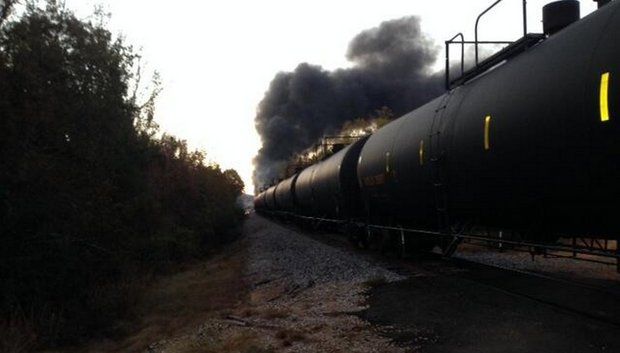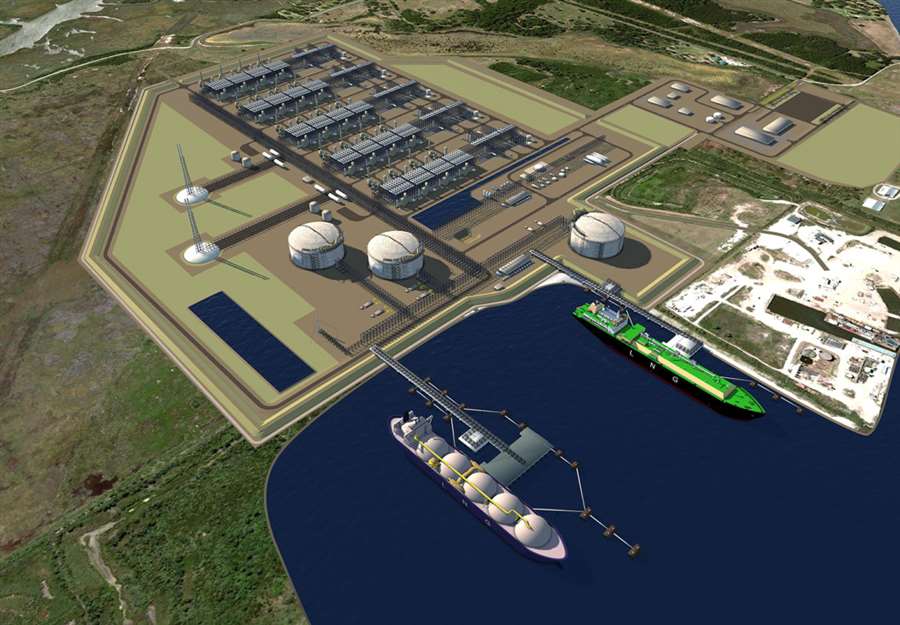We’re all used to seeing oil spills at sea, or oil spewing from a ruptured pipeline. But lately we’ve been presented with a new image of oil spills with increasing frequency: train derailment.
Last Friday, a train carrying crude oil from the Bakken shale in North Dakota was traveling through a rural part of Alabama when 20 of its cars derailed and exploded. Firefighters left 11 of the cars to burn themselves out overnight. Flames were reportedly shooting 300 feet into the air.
The cause of the accident, as well as the extent of the oil spill into a surrounding wetlands area, can’t be determined until the fire stops burning, which officials say could take several days.
This was not the only train carrying crude oil that derailed in recent memory. It wasn’t even the only train derailment last week.
On November 4, three tanker cars of a train carrying petcoke, a byproduct of the refining process, derailed in Benicia, CA as it left a Valero refinery. No petcoke was actually spilled, but it came at an inopportune time for Valero, which is seeking to increase the amount of tar sands oil it ships by rail from Canada to its California refinery.
More examples are easy enough to find these days. On October 19, 13 cars of a train carrying liquid petroleum gas and crude oil derailed outside of Gainford, Alberta while en route to Vancouver.
The safety of shipping oil by rail has already been a topic of much debate in Canada after a runaway train carrying crude exploded in the center of Lac-Megantic, Quebec last July, leveling dozens of buildings and killing 47 people.
The surge in oil spills and other accidents caused by train derailments is perhaps the inevitable consequence of the massive increase in oil shipments by rail over the past few years, precipitated by a boom in North American oil production in remote places like North Dakota and the Canadian tar sands.
Without enough pipelines to move the crude to terminals and refineries on the coasts, companies are shipping more and more of their oil by train.
Crude-by-rail shipments in the U.S. have increased 44 percent over last year, now accounting for one-tenth of all domestic production (roughly 740,000 barrels per day). Canadian officials expect as many as 140,000 carloads of crude oil to be shipped via rail this year, compared to just 500 as recently as 2009.
And there are no signs that this trend will slow down any time soon.
New crude-by-rail terminals are expected to be completed in western Canada by the end of next year, adding an additional capacity of 550,000 barrels per day.
Along with Valero, Tesoro and Phillips 66 have also announced plans to build new facilities for moving tar sands crude from Canada to their refineries in California, meaning as much as 286,000 barrels of tar sands dilbit could soon be shipped by rail every day through the Pacific Northwest on its way to the Golden State.
Meanwhile, two rail terminals planned for Bakersfield, CA could bring another 220,000 barrels of oil into the state every day.
As the rash of derailments show, safety regulations have not kept up with the boom in crude-by-rail shipments.
The U.S. National Transportation Safety Board crafted new safety guidelines for shipping oil by train in March of 2012, but the Department of Transportation has yet to adopt the measures, which include requiring double-hulled cars that are more puncture resistant and other strengthening features.
Train cars built after October 2011 already meet the new specifications, but it would cost the oil industry an estimated $1 billion to retrofit the nearly 300,000 older cars currently in use.
Image credit: Alabama Emergency Management Agency
Subscribe to our newsletter
Stay up to date with DeSmog news and alerts







